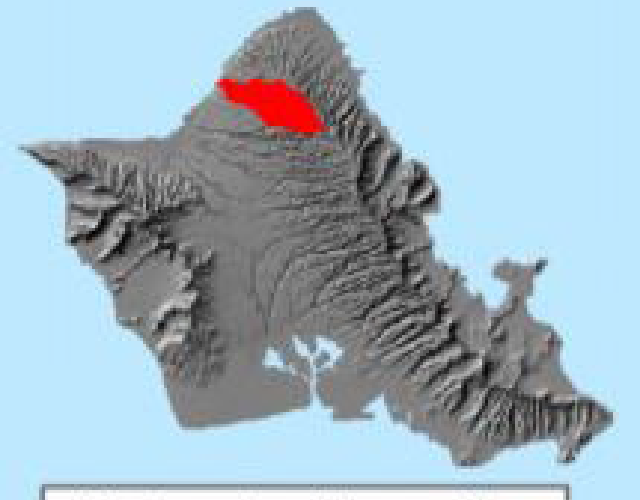Have you ever wondered why Hawaiian place names are shared on different Islands? Examples include Kailua, Kona, Waialua and of course Waimea. Hawaiian place names often provide information about the location or environmental conditions of sites and these can be similar on multiple Islands. Waimea can be literally translated to reddish brown fresh water. Waimea is a town and land division on Hawaii Island, a river on Kauai, and a bay and valley or ahupua‘a on Oahu. In Tonga Vaimea is a place name and in New Zealand the Maori people have a district called Waimea on the South Island.
In our winter months of the ho‘oilo season, from October to April, rains can saturate the soil and lead to erosion and flash flooding. Storm water drainage results in run off from the natural areas of the 13.6 square mile watershed. Non-point source pollution from conservation land is recognized as a major contributor to the total loading of sediments in our Hawaiian streams. The reddish silt carried by flood waters is common throughout the islands and from a geological time perspective the Hawaiian Islands are rapidly eroding into the sea. Land use and management can reduce this run off and accrue benefits to the near shore marine ecosystem.
Waimea Valley conservation staff conduct native forest restoration and stream bank management to help minimize the erosion of soils into the tributary streams. Our Hui Hanai ‘Aina volunteer program enables community members to participate in much of this work. The natural estuary and wetland area at the mouth of the river slows the flowing waters and allow sediments to settle out of the water column before the water enters the ocean. The removal of invasive species can also reduce the ecological changes on the landscape and forestall catastrophic erosion events such as land slides and rock falls.
Hawaiian poetry and stories often included figurative meanings called kaona. This may have been true for place names as well. Another translation of the word mea is ‘things’. Fresh water things would include all the plants and animals that reside in Waimea. Some folks say plants just grow better here, but confirm it for yourself by visiting our fantastic collection of native Hawaiian and exotic plant specimens that make up Waimea’s botanical collection. Admission is always free on your day of volunteering and you may get to plant some trees as part of your efforts here. Planting trees is a great way to reduce your carbon foot print and start the new year with great climate karma.
Questions regarding the safety of standing water or “brown water” in the coastal and inland areas of the State should be directed to the Department of Health, Clean Water Branch on Oahu at (808) 586- 4309 during normal business hours.



